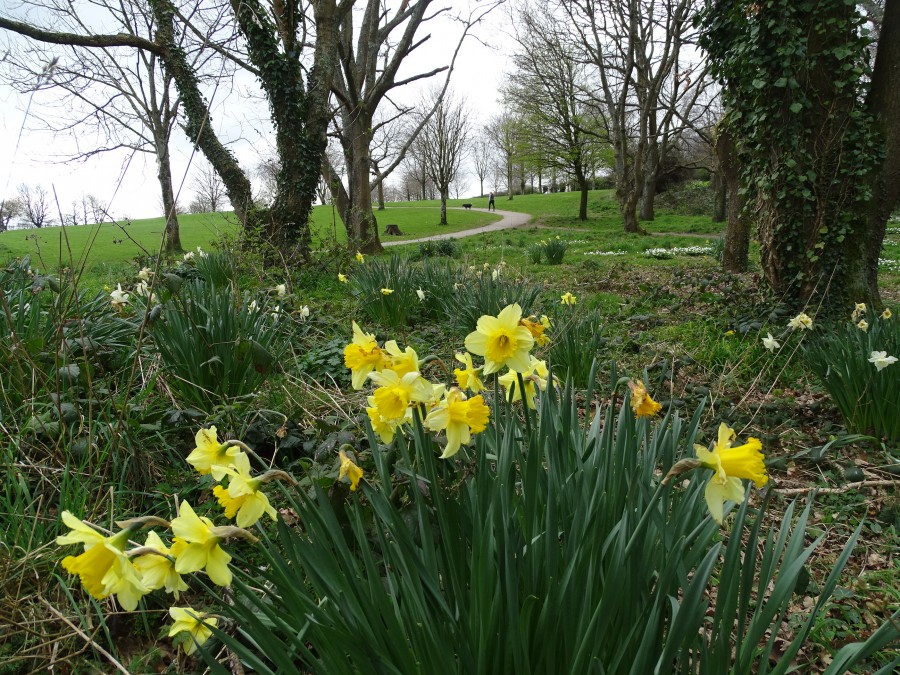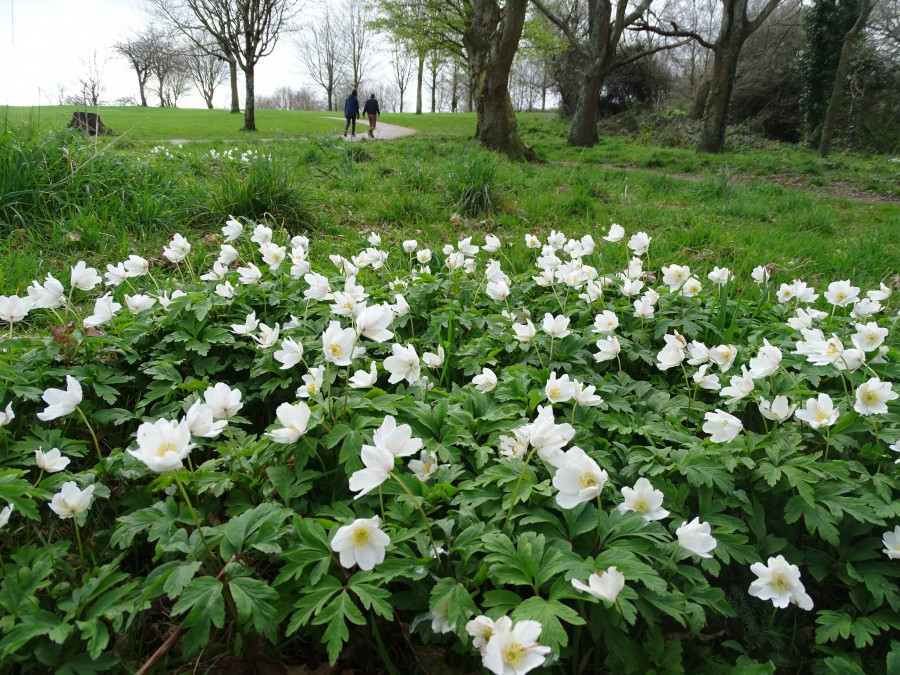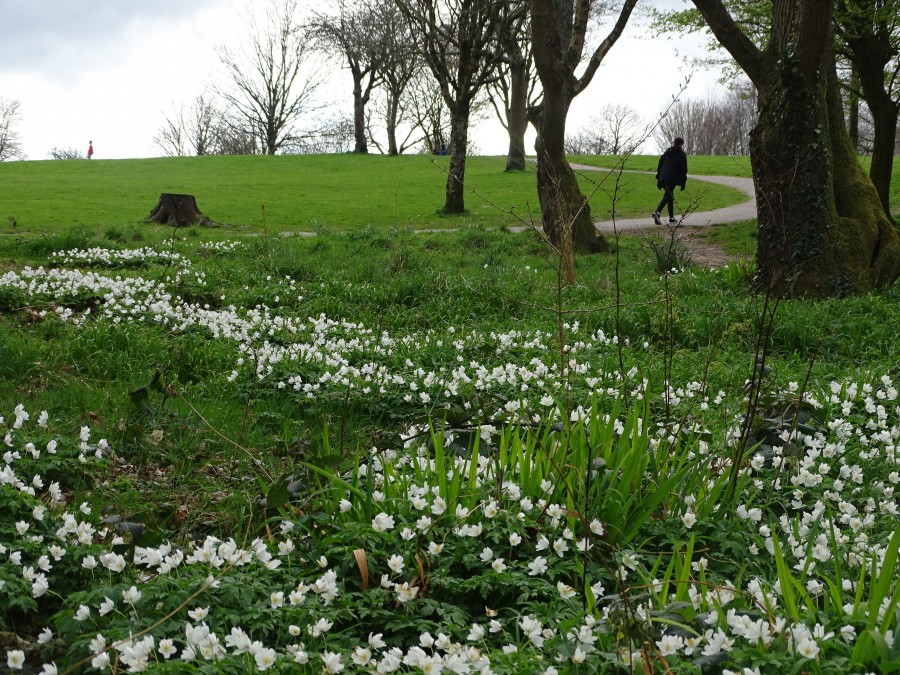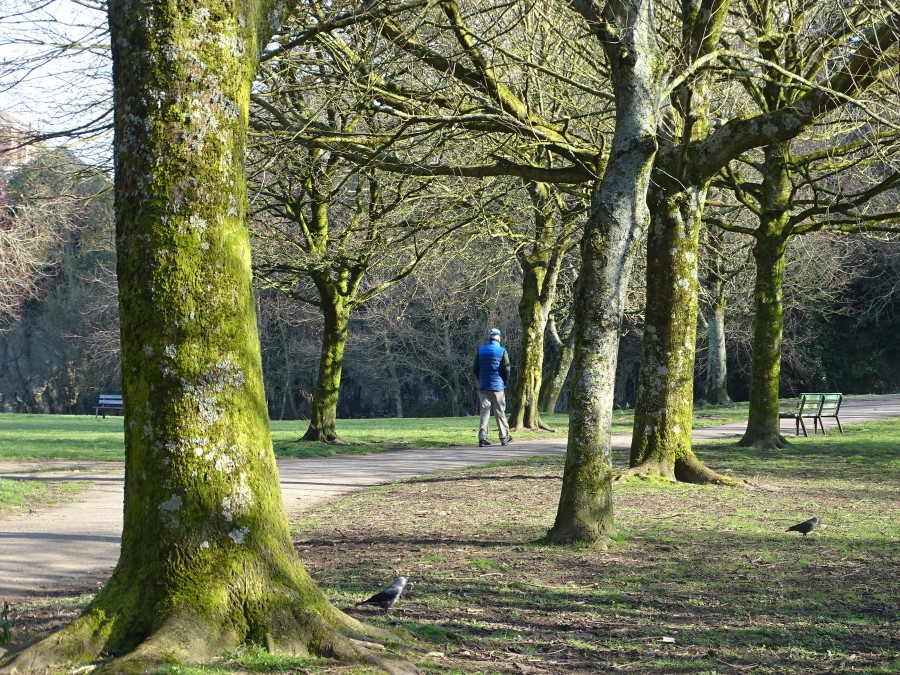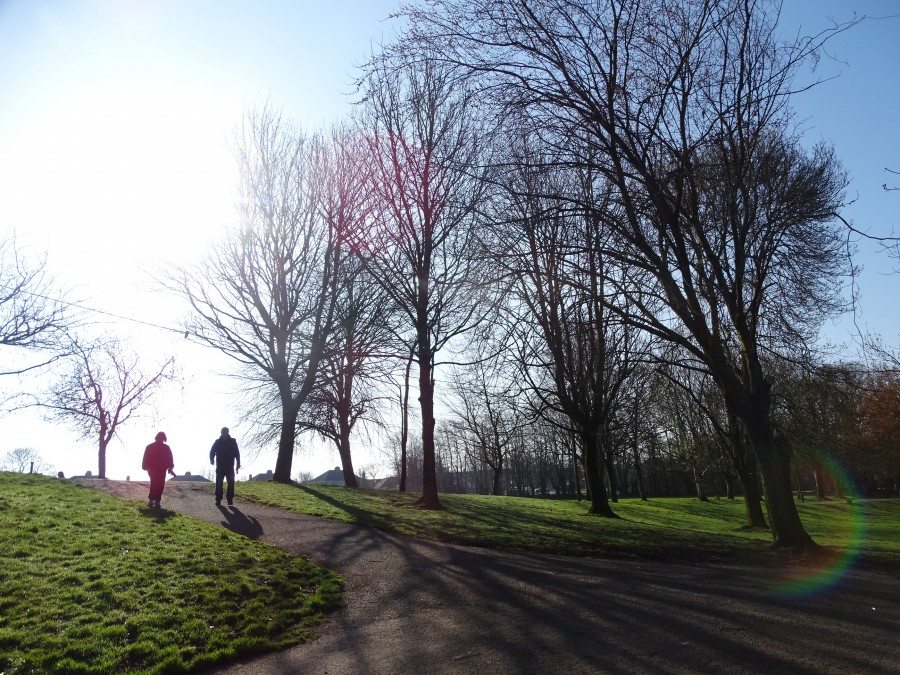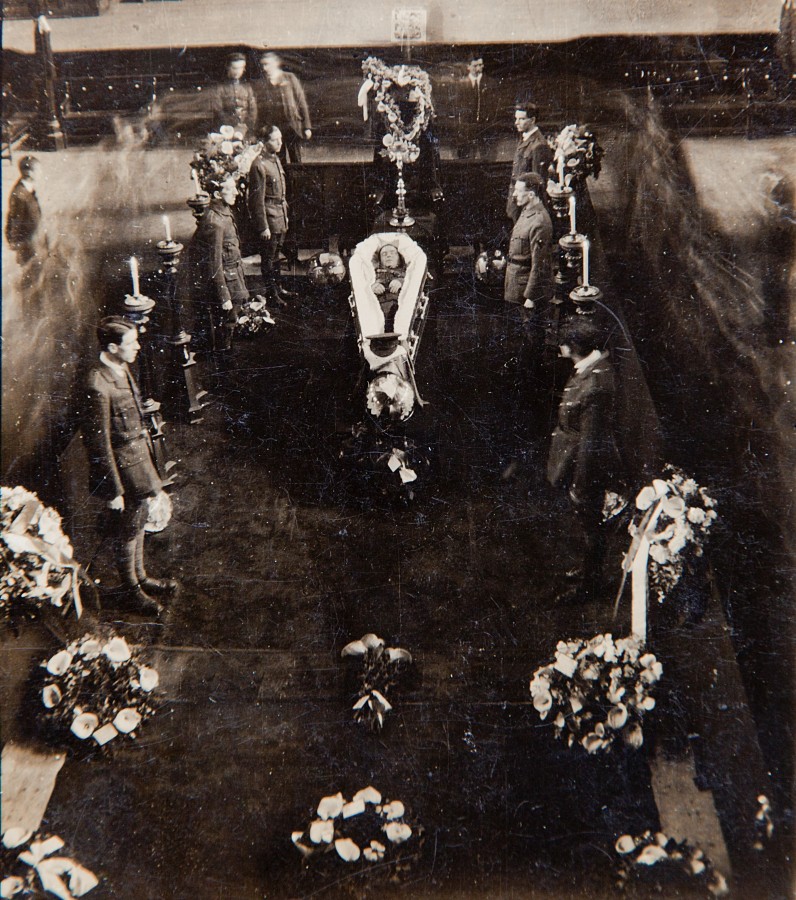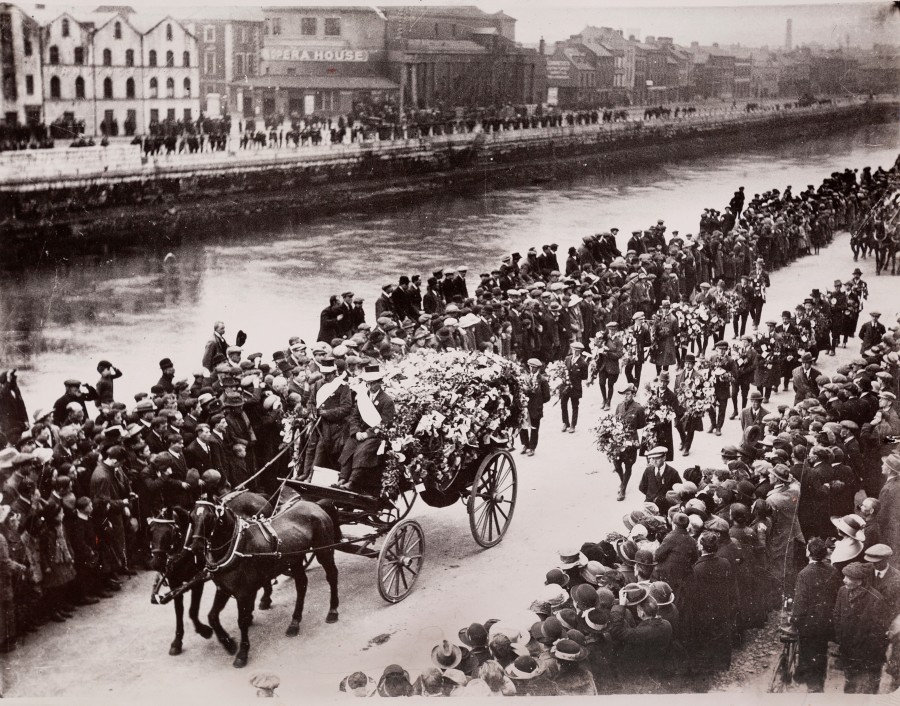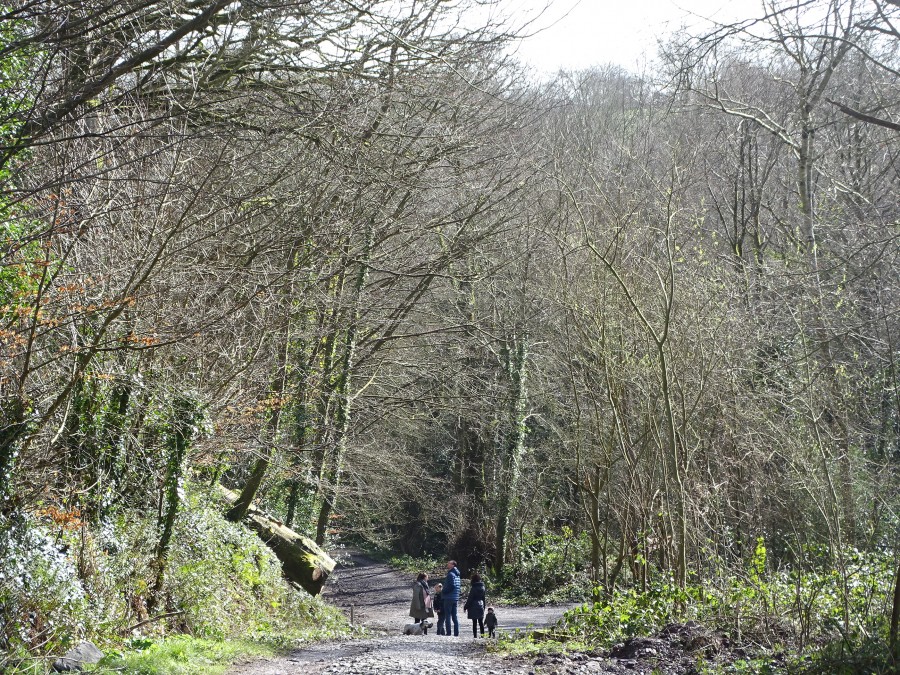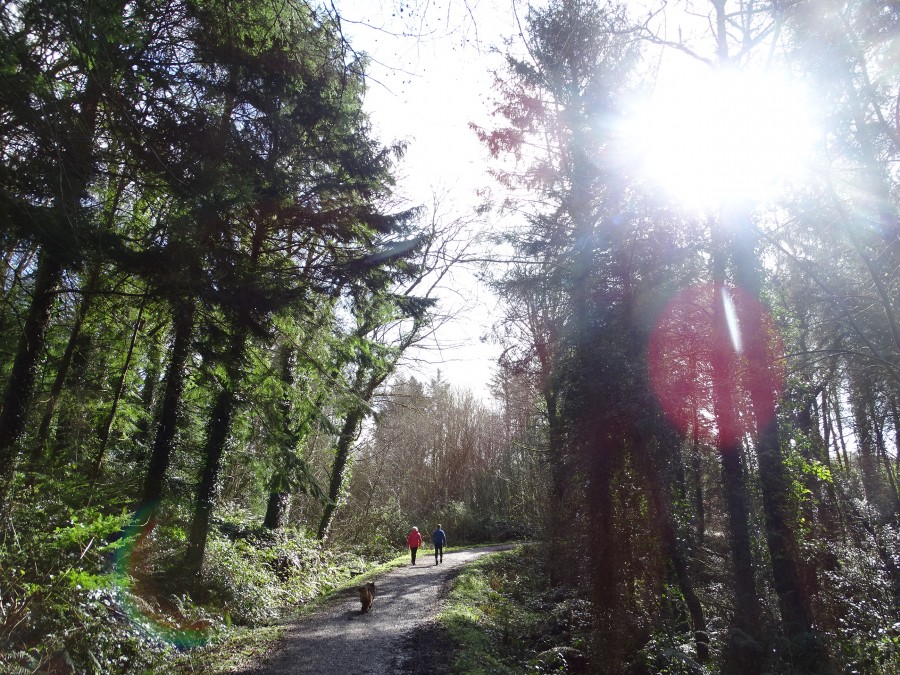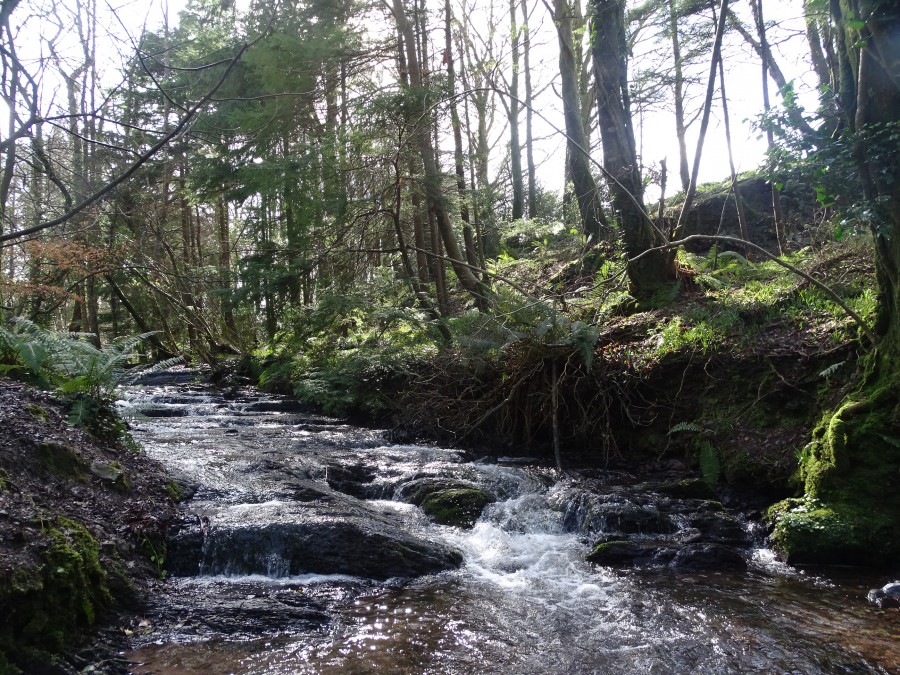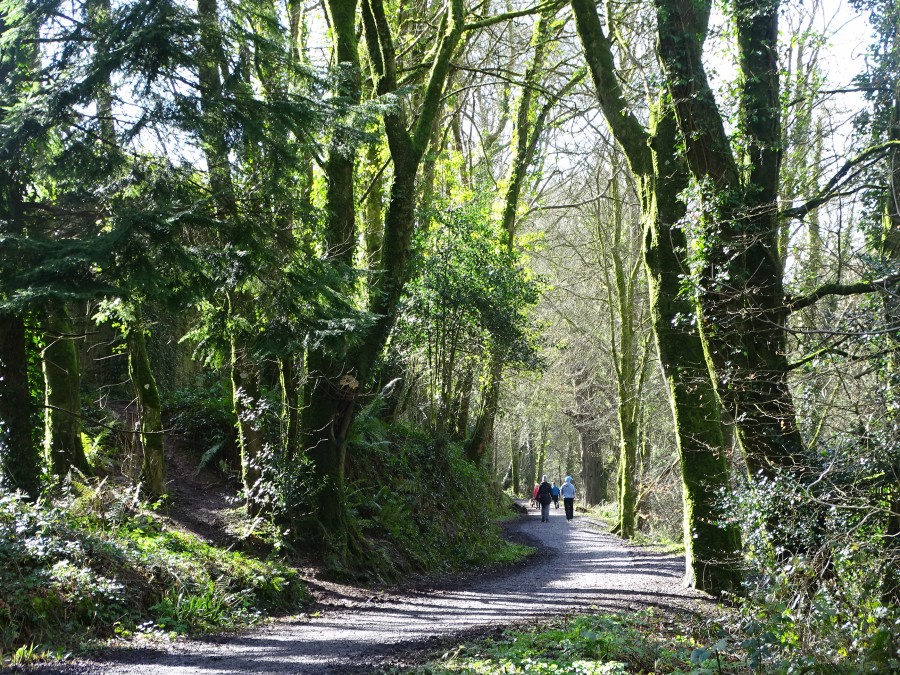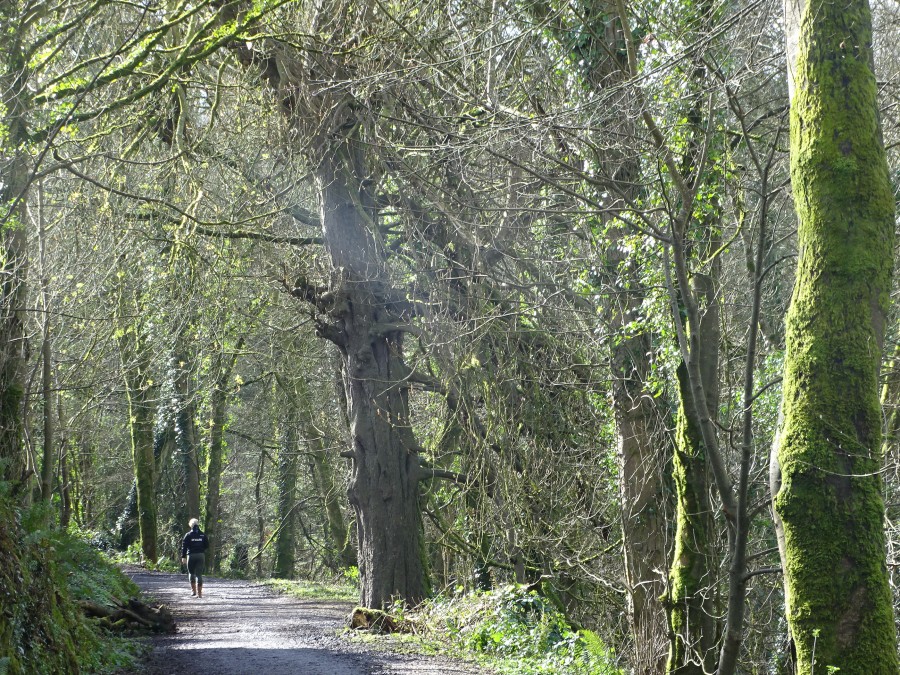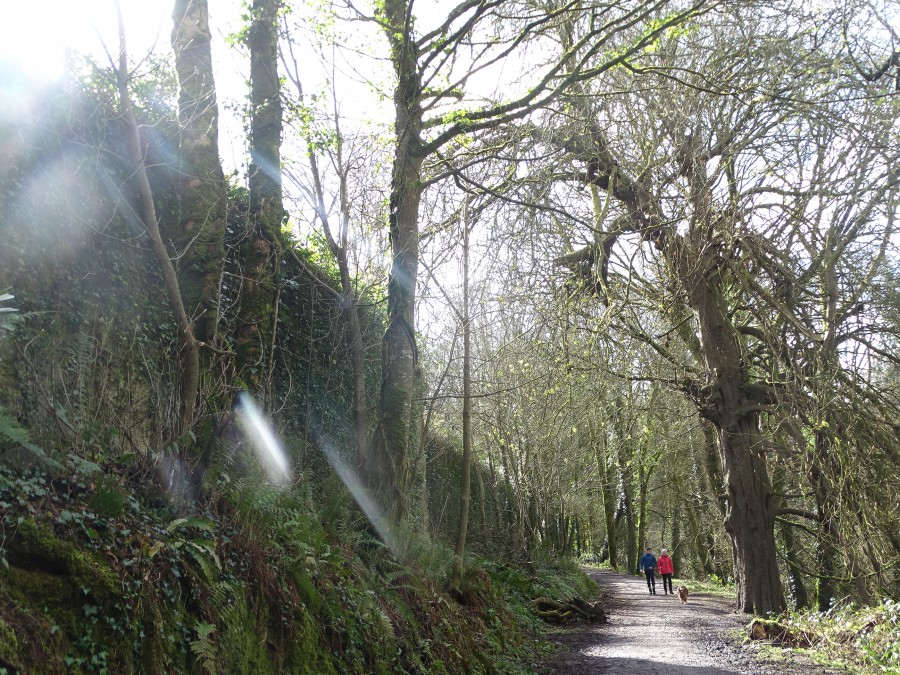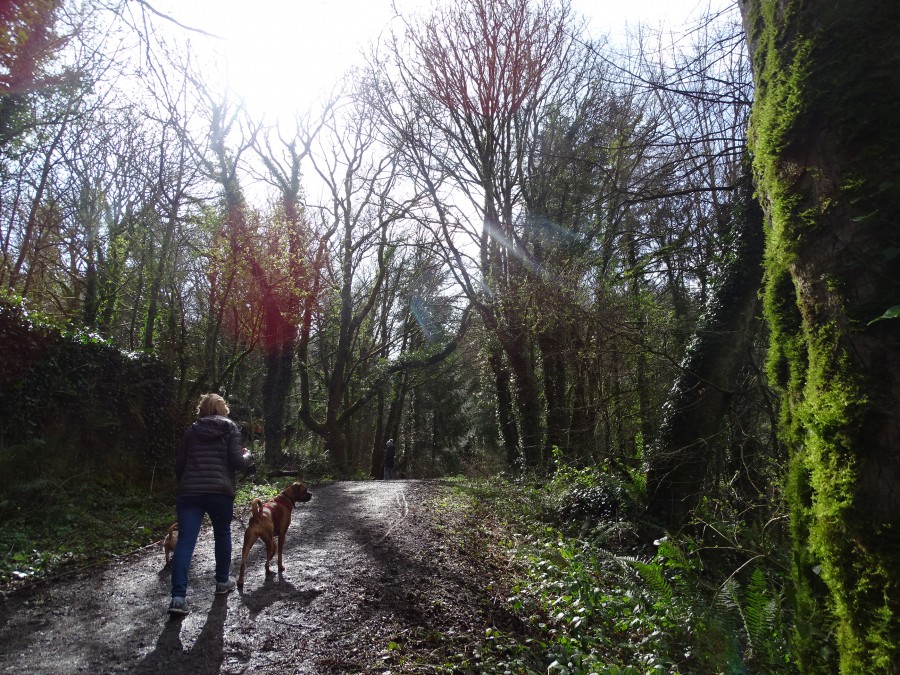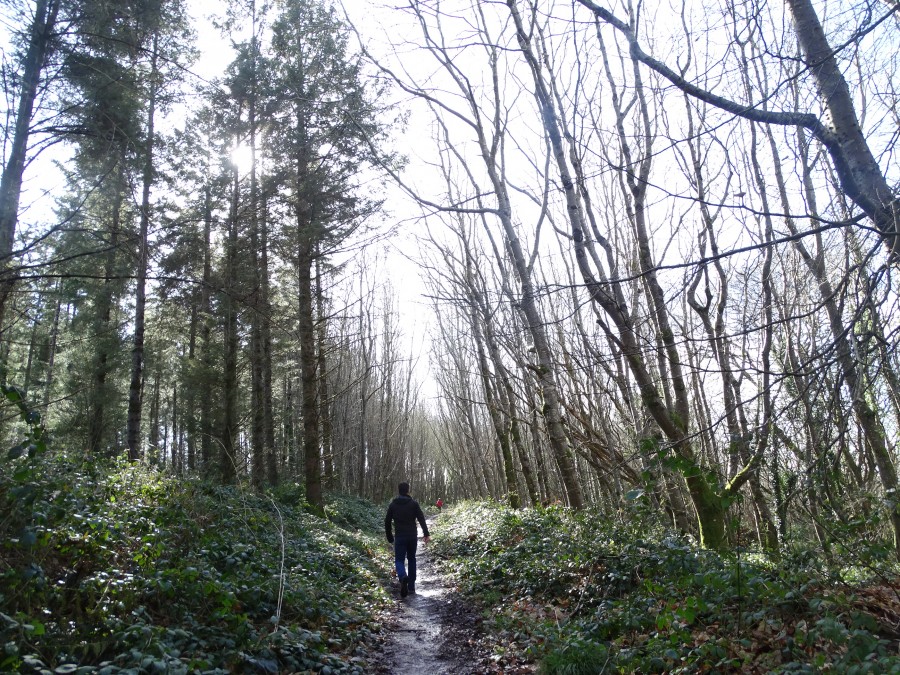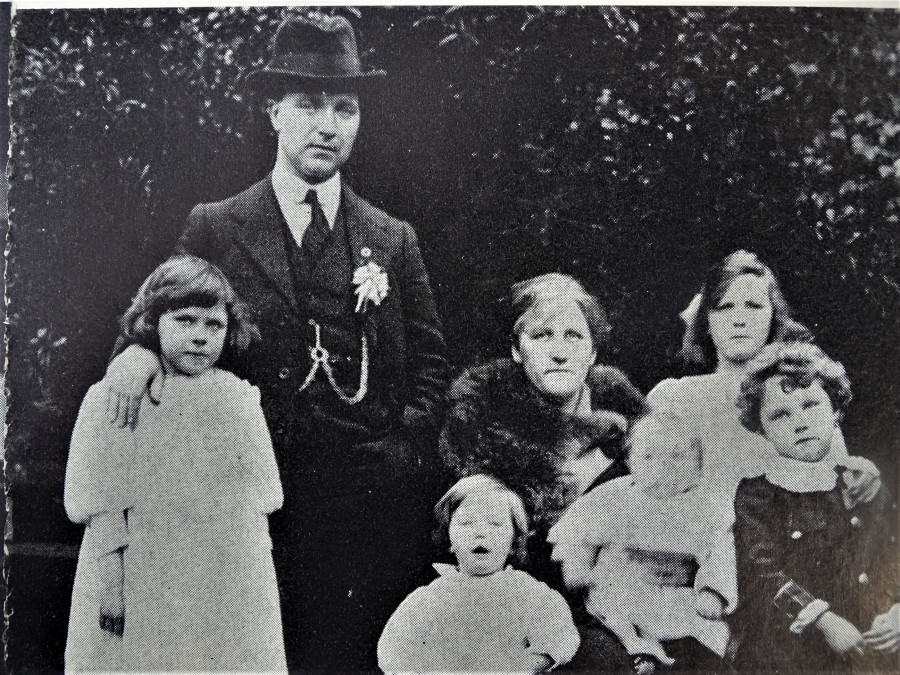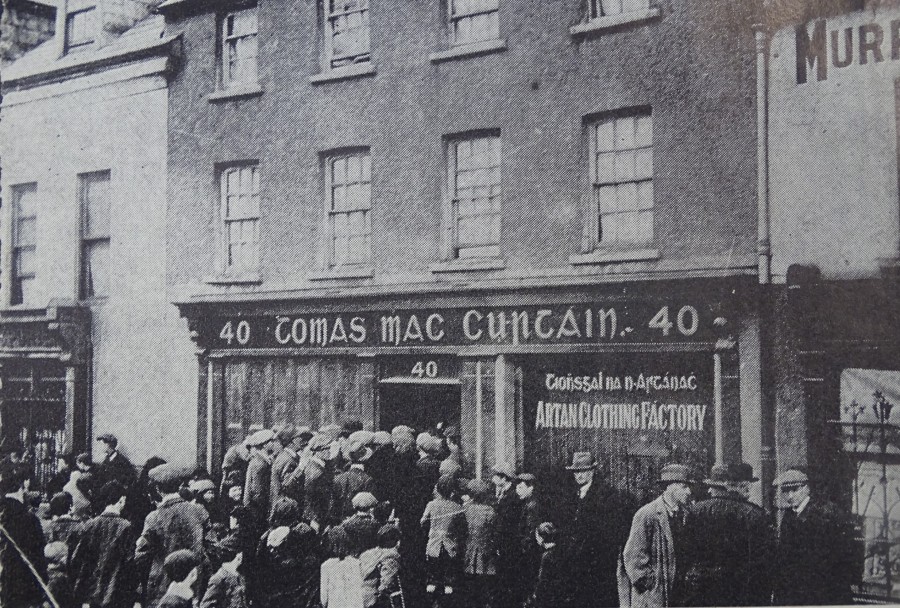Ward Landscapes – Spring in Beaumont Park, 31 March 2020
COVID -19 Community Response Forum, 31 March 2020
Kieran’s Our City, Our Town, 2 April 2020
Kieran’s Our City, Our Town Article,
Cork Independent, 2 April 2020
Remembering 1920: Arise Lord Mayor MacSwiney
A special meeting of the Council of the Cork Corporation was held on 30 March 1920 in the old Cork City Hall, for the purpose of electing a Lord Mayor in lieu of the tragic death of Tomás MacCurtain. In light of the turbulent times just 32 of the 56 members were present. On the motion of Alderman Liam de Róiste, Professor Stockley was moved to the chair. Alderman de Róiste, speaking in Irish proposed that Terence MacSwiney be elected. Alderman Barry seconded, and the motion was supported by Sir John Scott.
There was no other candidate proposed, and the Chairman, amid loud applause, declared Cllr Terence MacSwiney unanimously elected. As Terence left his seat in the Chamber to walk to the chair, the audience and members of Council stood up and cheered.
Having been invested with the chain of office the Lord Mayor first spoke in Irish. He then continued in English outlining his view of the events of the previous weeks – the murder of his friend Tomás MacCurtain and his thoughts on hope, sacrifice and endurance. Below is his speech from his inauguration, which was published in the Cork Examiner of the day and in a number of other regional newspapers:
“I shall be as brief as possible. This is not an occasion for many words, least of all a conventional exchange of compliments and thanks. The circumstances of the vacancy in the effect of Lord Mayor governed inevitably the filling of it. And I come here more as a soldier, stepping into the breach, than an administrator to fill the first post in the municipality. At a normal tine it would be your duty to find for this post the Councillor most practised and experienced in public affairs. But the time is not normal.
We see in the manner in which our Late Lord Mayor was murdered an attempt to terrify us all. Our first duty is to answer that threat in the only lilting manner by showing ourselves unterrified, cool and inflexible, for the fulfilment of our chief purpose – the establishment of the independence and integrity of our country the peace and happiness of our country. To that end I am here. I was more closely associated than any other hero with our late murdered friend and colleague, both before and since the events of Easter week, in prison and out of it, in a common work of love for lreland, down to the hour of his death.
For that reason I take his place. It is, I think, though I say it, the fitting answer to those who struck him down. Following from that there is a further matter of importance only less great – it touches the efficient continuance of our civic administration. If this recent unbearable aggravation of our persecution by our enemies should cause us to suspend voluntarily the normal discharge of our duties it would help them very materially in their campaign to overthrow our cause. I feel the question of the future conduct of our affairs is in all our mind. And I think I’m voicing the general view when I say that the normal functions of our Corporate body must proceed, as far as in our power lies, uninterrupted, with that efficiency and integrity of which our late civic head gave such brilliant promise. I don’t wish to sound a personal note, but this much may be permitted under the circumstances – I made myself active in the selection of our late colleague for the office of Lord Mayor. He did not seek the honour, and would not accept it as such, but when put to him as a duty he stepped up to his place like a soldier.
Before his election we discussed together in the intimate way we discussed everything touching our common work since Easter week. We debated together what ought to be done and what could be done, keeping in mind, us in duty bound, not only the ideal line of action, but the practicable line at the moment as well. That time he followed with an ability and success all his own. Gentlemen, you have paid tribute to him on all sides. It will be my duty and ready purpose to follow that line as faithfully as in my power, though no man in this Council could hope to discharge its functions with his ability and his perfect grasp of public business in all its details and, as one harmonious whole. I have thought it necessary to touch on this normal duty of ours, though – and it may seem strange to say it – I feel at the moment it is even a digression. For the menace of our enemies hangs over us, and the essential immediate purpose is to show the spirit that animates us, and how we face our future.
Our spirit is but to be a more lively manifestation of the spirit in which we began the year to work for the city in a now zeal. Inspired by our initial act when we dedicated it and formally attested our allegiance, to bring by our administration of the city glory to our allegiance, and by working for our city s advancement with constancy in all honourable wavs in her new dignity as one of the first cities of Ireland, to work for, and, if need be, to die for.
I would recall some words of mine on that day of our first meeting after the election of Lord Mayor. I realised that most of you in the minority here would be loyal to us, if doing so did not threaten your lives; but that you lacked the spirit and the hope to join with us to complete the work of liberation so well begun. I allude to it here again, Because I wish to point out again the secret of our strength and the assurance of our final victory. This content of ours is not on our side a rivalry of vengeance, but one of endurance – it is not they who can inflict most but they who can suffer most – will conquer – though we do not abrogate our function to demand and see that evil doers and murderers are punished for their crime? But it is conceivable that they could interrupt our course for a time; then it becomes a question simply of trust in God and endurance. Those whose faith is strong will endure to the end, and triumph. The shining hope in our time is that the great majority of our people are now strong in that faith”.
To you, gentlemen of the minority here, I would address a word. I ask you again to take courage and hope. To me it seems – and I don’t say it to have won – that you have a lively faith in the power of the devil, and but little faith in God. But God is over us, and His Divine intervention we have perfect trust. Anyone surveying the events in Ireland for the past five years must see that is approaching a miracle how our country has been preserved. God has permitted this to be to try our spirits, to prove us for a great and noble destiny. You among us have yet no vision of the future, have been astray by false prophets. The liberty for which we today strive is a sacred thing – inseparately entwined as body with soul with that spiritual liberty for which the saviour of man died, and which is the inspiration and foundation of all just government because it is sacred, and death for it is akin to the sacrifice on Calvary, following far off but constant to that Divine example in every generation our best and heaviest have died.
Sometimes in our grief we cry out foolish and unthinking words; “the sacrifice is to great”. But it is because they were our best and bravest they had to die. No lesser sacrifice would save us. Because of it our struggle is holy – our battle is sanctified by their blood, and our victory is assured by their martyrdom. We, taking up the work they left is complete confident in God, offer in turn sacrifice from ourselves. It is not we who take innocent blood, but we offer it, sustained by the example of our immortal dead and that Divine example, which inspires us all – for the redemption of our country. Facing our enemies, we must declare our attitude supply. We ask for no mercy, and we make no compromise. But to the Divine author of mercy, and we will make no compromise. But to the Divine author of mercy we appeal for strength to sustain us, whatever the persecution, that we may bring our people victory in the end. The civilised world dare not continue to look on indifferent. But if the rulers of earth fail us we have yet sure succour in the Ruler of Heaven; and though to some impatient ears. His judgements seem slow; they never fail, and when they fail they are overwhelming and final.
Caption:
1042a. Lord Mayor Terence MacSwiney, Spring/ Summer 1920 (source: British Pathé).
Japanese Gardens, Ballinlough, 28 March 2020
Kieran’s Our City, Our Town Article, 26 March 2020
Kieran’s Our City, Our Town Article,
Cork Independent, 26 March 2020
Remembering 1920: The Funeral of Tomás MacCurtain
Within just a few hours of his death in the early hours of 20 March 1920, the coffin of Lord Mayor Tomás MacCurtain was carried by hearse from his home in Blackpool to Cork City Hall. Heartrending scenes were witnessed. Men and women knelt down in the street and wept. Such was the intensity of the crowds that sections of Volunteers had considerable difficulty in managing the crowds and local traffic. The streets around Blackpool Bridge became absolutely impassable. Contingents of Sinn Féin members, members of trade and labour bodies, members of Cork Corporation and many more crammed into the area. A pipers’ band played the Dead March on the route to City Hall, and the procession of mourners, extending over two miles in length, included a large number of clergy and public men. The police were withdrawn, from the streets of the city.
Everyone wore the tricolour draped in black, and all the window blinds in the city were drawn as a mark of respect. The 1st Battalion of the Cork Volunteers acted as bodyguard, and at City Hall a party of the men remained to watch over the coffin throughout the night. The business of Cork City Hall was suspended for the removal and the funeral the following day. The Republican Flag was at half-mast above the municipal civic emblem, and on the door of entrance hall appeared, a card bearing the inscription, “Closed in consequence of the murder of Tomás MacCurtain, first Republican Lord Mayor of Cork”.
On 22 March 1920, the Celebrant of the Requiem High Mass at the North Cathedral was the Rev H J Burts CC, Rev R J O’Sullivan CC Deacon, Rev J Aherne, CC Sub-Deacon. Bishop Daniel Cohalan presided.
Upon the coffin was a plate bearing an inscription in Gaelic, translated as “Thomas MacCurtain Commandant, 1st Brigade, Cork, Army of the Irish Republic and Lord Mayor of Cork, who was foully done to death by the servants of the foreigner on March 20, 1920, in the fourth year of the Irish Republic, at the age of 37 years. MAY GOD HAVE MERCY ON HIS SOUL”.
Addressing the congregation, Bishop Cohalan put no blame on anyone but shared his condolences with the family and condemned the murder. “Every murder, dear brethren, is a violation of the fifth commandment – the murder of the humblest and poorest member of the community as well as the murder of a head of a State…we have lost the Civic Head of the municipality by the murder of Lord Mayor MacCurtain. It was an awful crime – a most unusual crime is the murder of the Mayor of a city – it was a crime against the law of God and a crime against the city”.
All national and regional Irish newspapers carried the story of the funeral. Many, such as the Cork Examiner, list the public bodies represented at the Church, which reflect the depth of respect for the Mayoralty of the city. Some of the those included the Chairman and members of the Queenstown Urban Council. Queenstown Trade and Labour and Sinn Féin organisations, Mallow Rural and Urban District Councils, Youghal, Clonakilty, Bandon and Skibbereen Councils, North-East Cork Executive Gaelic League, Southern Land Association, Cork Medical Association, and New Ross Urban Council.
Labour bodies at the funeral were: The Transport Union, Typographical Association, National Union of Railwaymen, Ford Factory employees, Bakers’ Society, Tailors’ Society, and the Grocers’ Society. Other organisations in attendance were: The Discharged and Demobilised Soldiers, Irish National Foresters, Ancient Order of Hibernians, the Catholic Young Men’s Society, Commercial Travellers’ Federation, Cattle Traders’ ‘Association, and the All-for-Ireland Club. The processionists also included the staff and students of Cork Grammar School, boys from North Monastery. Sullivan’s quay, and Blarney street Schools, and the Fire Brigade. All Creeds were represented.
The Rev Dr Dowse, Protestant Bishop of Cork, Cloyne, and Ross was represented by Rev. Dean Babington. Rev H Klein, Jewish minister and Officer of Residence, University College was also present, with Mr J T Klein, Secretary of Cork Hebrew Congregation. Mr William O’Brien, formerly leader of the All for Ireland Movement, and Captain Donelan, late Chief Whip of the Irish Party, also attended.
After the High Noon mass, the funeral procession started to St Finbarr’s Cemetery. The coffin was shouldered by six Volunteers in uniform. The Bishop in his carriage came next. The clergy, numbering about a hundred; Christian Brothers and presentation Brothers followed, who wore Sinn Féin mourning rosettes. Then came the Volunteers Piper’s playing “Wrap the Green Flag Round Me”. Behind was Fr Dominic who was the Lord Mayor’s Chaplain, who was accompanied by Cllr Terence MacSwiney and other officers of the volunteers. A carriage laden with wreaths followed and behind them were 25 volunteers, each carrying a wreath. Each wreath comprised an abundance of lilies and daffodils, and long flowing green, gold and white ribbons. The chief mourners walked behind, behind which was members of the Corporation, Harbour Board, and public bodies and organisation. However, the general public comprised over 10,000 people. It took one hour and a half to pass any given point.
From the North Cathedral to St Finbarr’s Cemetery, the distance was just over four miles via King Street, Merchants Quay, St Patrick’s Street, Washington Street, and Western Road. At the Western Road entrance to Cork Gaol, an open space was preserved by Volunteers to enable the political prisoners to obtain a view of the cortege as it passed from their windows.
At the cemetery, Bishop Cohalan blessed the grave. When it was covered, the Last Post was sounded and three volleys of shots were fired.
Captions:
1041a. Photo of Tomás MacCurtain Lying in State at Cork City Hall, 21 March 1920 (source: Cork City Museum).
1041b. Funeral procession of Tomás MacCurtain on Camden Quay, Cork, 22 March 1920 to St Finbarr’s Cemetery (source: Cork City Museum).
Cork City Cllr Kieran McCarthy calls on Regions and Cities to work together to defeat Coronavirus
|
At a special European Committee of the Regions Conference of Presidents meeting held by video conference on the 24th March a five point action plan of the CoR was agreed to support and assist local and regional authorities on the forefront of the fight against the Coronavirus pandemic. The five-points Plan includes the launch of an exchange platform to help local and regional leaders sharing their needs and solutions and to enhance mutual support between local communities across Europe. It will also enable CoR Members to give their feedback on the EU actions already put in place, allowing a policy reality check from the ground. The CoR will provide regular and practical information about EU measures, with particular focus on the financing opportunities.
The European Alliance Group President Cllr Kieran McCarthy (Cork City) strongly supported the action plan and said it was vital that Regions and Cities across the EU worked together to ensure that this virus would be defeated and that regions and cities had to means at their disposal via EU and National Funding. He added it was hugely important for citizens to heed the advice of the relevant authorities regarding ‘staying at home’ and ‘social distancing’.
Commenting the endorsement of the Action Plan, the President of the European Committee of the Regions, Apostolos Tzitzikostas, said: “Our CoR members and all EU’s regional and local leaders are making extraordinary efforts in the fight against the pandemic. In these difficult times we must be united and act responsibly. Many Presidents of Regions and Mayors have asked me to establish an exchange platform that will allow CoR members and EU local and regional leaders to share their needs, feedback and ideas and to elaborate common solutions. The Action Plan will also allow to better target local communities’ healthcare needs and to address the social and economic aspects of the pandemic and their impact on local and regional authorities”.
Cllr McCarthy has also emphasised that the outbreak and rapid spread of COVID-19 is putting public sector organisations through great challenges and great stress with local governments, public administrations, local health services particularly at the forefront of the crisis; “This is a virus with a serious impact on public health, the economy and social and political issues. Different countries, and different regions within the same country are in different scenarios but knowledge of different interventions can help those on the front line with more information and how to drive the virus back”.
Cllr McCarthy added: “The EU has over 280 regions and members of the committee of the Regions stand ready to assist in core EU activities on COVID 19 combatting such as the collection of knowledge of the European Centre for Disease Prevention and Control, to work with the EU’s advisory panel on COVID-19, offer advice on the operation on EU Civil Protection Mechanism and offer perspective on the roll out of the European Stability Mechanism and Coronavirus Response Investment Initiative”.
The European Committee of the Regions:
The European Committee of the Regions is the EU’s assembly of regional and local representatives from all 27 Member States. Created in 1994 following the signing of the Maastricht Treaty, its mission is to involve regional and local authorities in the EU’s decision-making process and to inform them about EU policies. The European Parliament, the Council and the European Commission consult the Committee in policy areas affecting regions and cities. To sit on the European Committee of the Regions, all of its 329 members and 329 alternates must either hold an electoral mandate or be politically accountable to an elected assembly in their home regions and cities. There are 9 Irish members in the CoR.
|
|
|
|
For further information contact:
Cllr Kieran McCarthy 087 655 3389
Micheal O Conchuir +32 2 282 2251
|
Covid-19 Update – Social Welfare & Restrictions, 24 March 2020
Please see details of announcement that have just been made in relation to the Covid 19 Social Welfare Payments and also the new restrictions which will now be in place until 19 April .
Increase in Covid 19 Special Social Welfare Payment
The Covid 19 Special Social Welfare Payment has been increased from €203 to €350 per week. This payment is also available to self employed people.
Employers to be given a temporary wage subsidy of 70% of take home pay up to a maximum weekly tax free amount of €410 per week to help affected companies keep paying their employees. This is the equivalent of €500 per week before tax
The Covid 19 illness payment is also increased to €350 per week – this is also for people in households who have been asked to self-isolate if 1 person is ill with Covid 19
The full details on this announcement are available https://www.gov.ie/en/press-release/a6d8fa-government-announced-new-covid-19-income-support-scheme/
People can apply for forms for these special Covid 19 payments by emailing forms@welfare.ie they can also now apply online at https://www.gov.ie/en/service/be74d3-covid-19-pandemic-unemployment-payment/
New Restrictions In place until April 19th
- All theatres, clubs, gyms, leisure centres, hairdressers, marts, markets casinos, bingo halls, betting shops, libraries and other similar places are to shut.
- All hotels and non-essential retail outlets will close – a list of those will be provided.
- All cafes and restaurants should limit to take away and deliveries only.
- All sporting events are cancelled – including those behind closed doors.
- All playgrounds and holiday/caravan parks are to close.
- All places of worship are to restrict numbers visiting.
- All household contacts of someone waiting for a test should restrict their movements.
- All non-essential visiting to other persons homes should be avoided.
- All scheduled cruise ships to Ireland will cease.
- Factories or construction sites should not have to shut – authorities can work with them to make sure physical distancing is possible.
- There will be an increased presence of park rangers and gardaí in parks and public places to ensure that physical distancing is being observed.
- Significantly raise the amount of money available on cashless card transactions.
- All organised indoor and outdoor events of any size are not to take place
- Social distancing, in as far as practicable, is to be ensured between the clients/patients in confined settings, such as:
long term care facilities, either for the elderly or people with special needs;
psychiatric institutions;
homeless shelters
prisons
Ward Landscapes – Old Court Woods, Garryduff, Rochestown, March 2020
Kieran’s Our City, Our Town, 19 March 2020
Kieran’s Our City, Our Town Article,
Cork Independent, 19 March 2020
Remembering 1920: The Murder of Tomás MacCurtain
One hundred years ago on the night of 19 March and the morning of 20 March 1920, Tomás MacCurtain (1884-1920), was murdered at his home in Blackpool. His murder is linked to the tit-for-tat violence between the Royal Irish Constabulary (RIC) and the Irish Republican Army (IRA). For example, on 10 March 1920 District Inspector McDonagh was shot dead by IRA members. The response by the RIC was the ransacking of Sinn Féin clubs and the homes of key members such as Seán O’Sullivan and Professor William Stockley. On 19 March 1920, RIC Constable Joseph Murtagh was shot and killed by the IRA near the City Centre. The RIC response was quick and this time Brigade no 1 Commander Tomás MacCurtain was to be the target. He was murdered later that night. The details of the murder were detailed by his wife Eilís in her inquest interview some days later, of which I lay out below.
Tomás and Eilís MacCurtain had lived for some years at 40 Thomas Davis Street in the heart of Blackpool. By March 1920 they had five children living, of whom the youngest was ten months. In addition to her late husband her three-sisters, brother, two nieces, and a nephew lived in the house. Eilís went to bed at 8.30pm on Friday night 19 March 1920, but she could not say when her husband retired. Sometime during the night she heard a tapping as with a man’s fingers at the door, and sometime after that she heard the door being broken in. After she heard the tapping, and before it was being broken, in, she looked out of the window and asked who was there, and those below said, “Come down”. She asked, when they were breaking in the door, if they would give her time to dress. But she got no reply. “I had a candle lighting in the bedroom”, she said. “My husband got up out of bed and said, ‘Lizzi, I will go down myself”.
Eilís went to the door and opened it. She had a candle in her hand. A man rushed in with a blackened face. One man outside the door then asked “where was Curtain?”, and she said that he was upstairs. Six men rushed in the hall—four tall men and two small men. The two smaller men carried rifles, which they held against their side. One gave orders to hold that her, and the second tall man turned around and caught her and shoved her towards the door. He wore a big overcoat and cap. The men immediately went upstairs, with the exception of one who stood beside me at the door. They were not up several steps of the stair when she heard the firing of rifles or revolvers. When they were upstairs the baby that was in the room of Eilís and Tomás cried. Eilís called out “you have mothers, and I am a mother; for God’s sake let me bring down the baby”. The baby stopped crying when shots were fired. When the crying stopped she thought the baby had been shot.
Shortly afterwards as the six men left the house they shoved Eilís out before them on the street, where she cried for help. She asked if someone could go for the priest, that her husband was shot. There were ten or fifteen men on the road outside the door then. The six men who had been in the house were part of that group. Her brother was also calling out for a priest from a top window, and after an order of “fire” was given the body of men faced the door and fired up towards the windows. The groups left and immediately, she closed the door and saw no more of them.
The body of Tomás was taken from the floor and placed in the bed. Eilís remained downstairs for some time after the men left as she telephoned for a priest to the North Presbytery, and there was some difficulty in getting communication. She, however, succeeded in getting the priest. Before the priest arrived, she went upstairs and addressed her husband by his Christian name, and Tomás opened his eyes. Eilís then telephoned again for the priest, the ambulance, and the doctor. The priest arrived first and heard his Confession end administered the Rites of the Church, but he was dead when the doctor arrived.
At 20 minutes past 1am on Saturday 20 March the telephone of Dr William O’Connor on St Patrick’s Hill rang. He was told by a man at the exchange to hurry to Blackpool – that the Lord Mayor Tomás MacCurtain had been shot and was very bad. Being connected to the MacCurtain phone he heard Mrs MacCurtain’s voice who said the Lord Mayor was shot and she was afraid he was dying. The doctor immediately dressed, got some surgical dressings, rushed out and got a car on Patrick’s Bridge which took him to Blackpool immediately. When he got to the house he found the Lord Mayor lying on the landing, On examination, he found he was dead. His shirt was stained with blood and he had two wounds on the right side of his chest. Dr O’Connor did not make any further examination under the circumstances but made a postmortem examination on the following evening.
An hour after the murder Eilís was downstairs with the baby in the shop when a second visit was paid to the MacCurtain house. There was another tap at the door, and she asked “Who was there?” and the answer was: “Military, open”. She opened the door, and was met with four bayonets to her face, I asked; “In the name of God, what do you want now?” and I got no answer. I then said: “Didn’t ye tear the heart out of him with bullets, and do you want to get my brother, now?”. About six soldiers went into the house with fixed bayonets and four remained outside the door, and two on the street outside. One was familiar to her. He was an RIC officer stationed at Blackpool. The group left after checking the body of Tomás.
More next week…
Captions:
1040a. Tomás & Eilís MacCurtain with family, March 1920 (source: Cork City Library).
1040b. Crowd outside MacCurtain House, Blackpool Bridge, the day after the murder of Tomás 20 March 1920 (source: Cork City Library).
